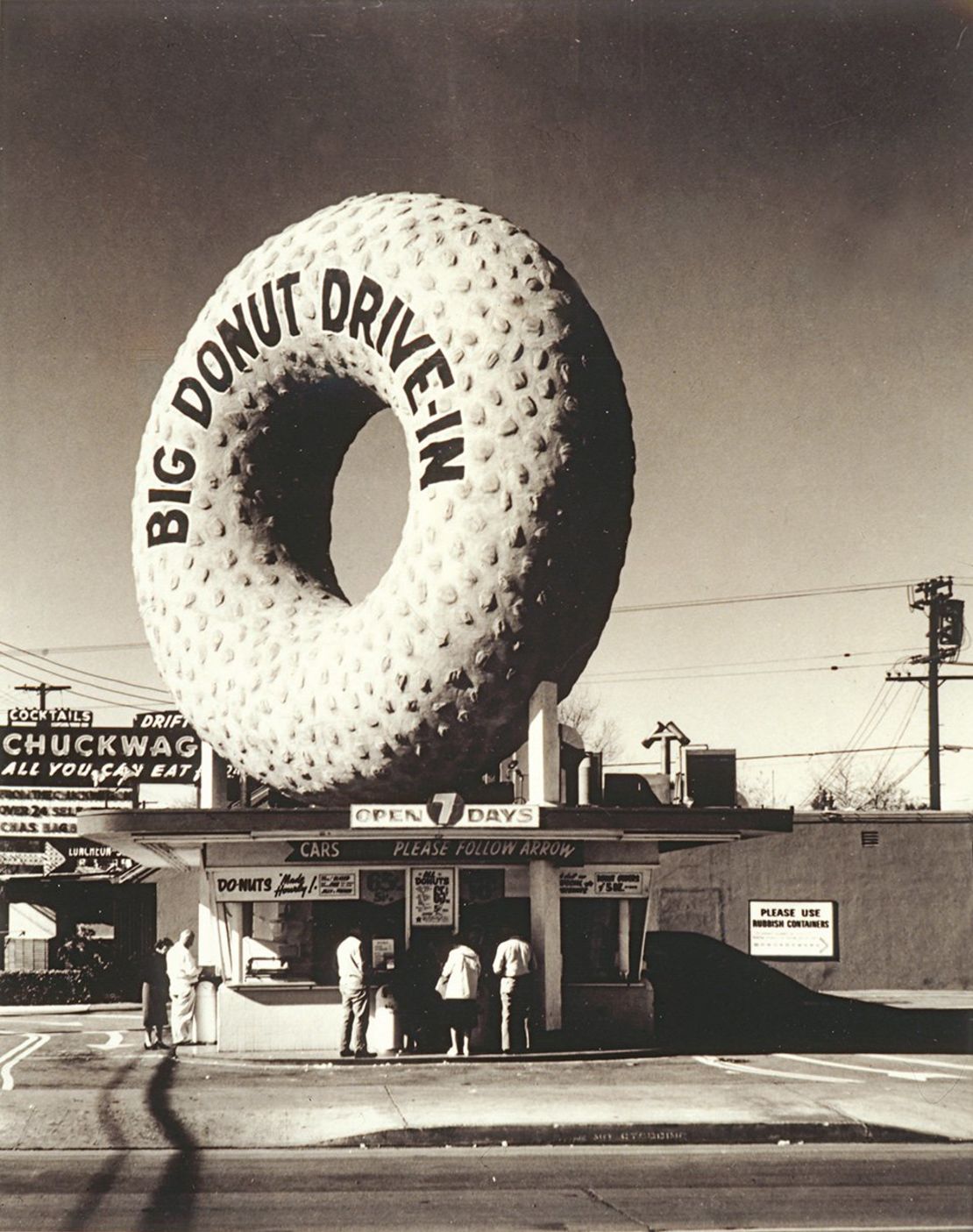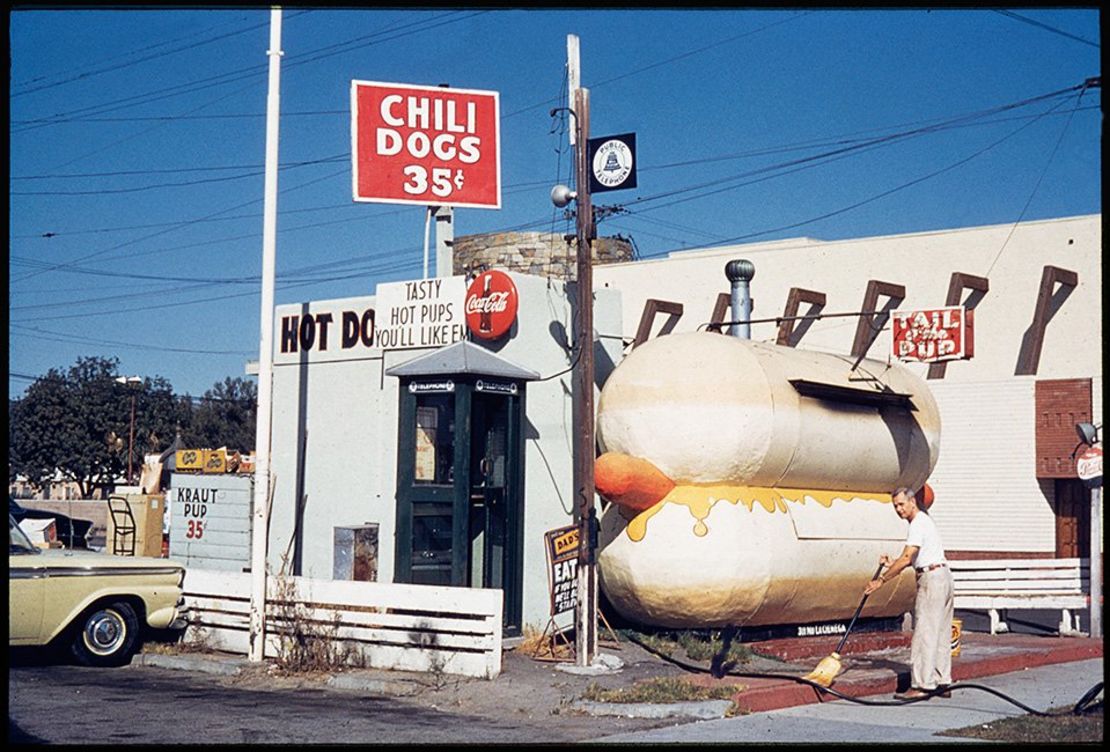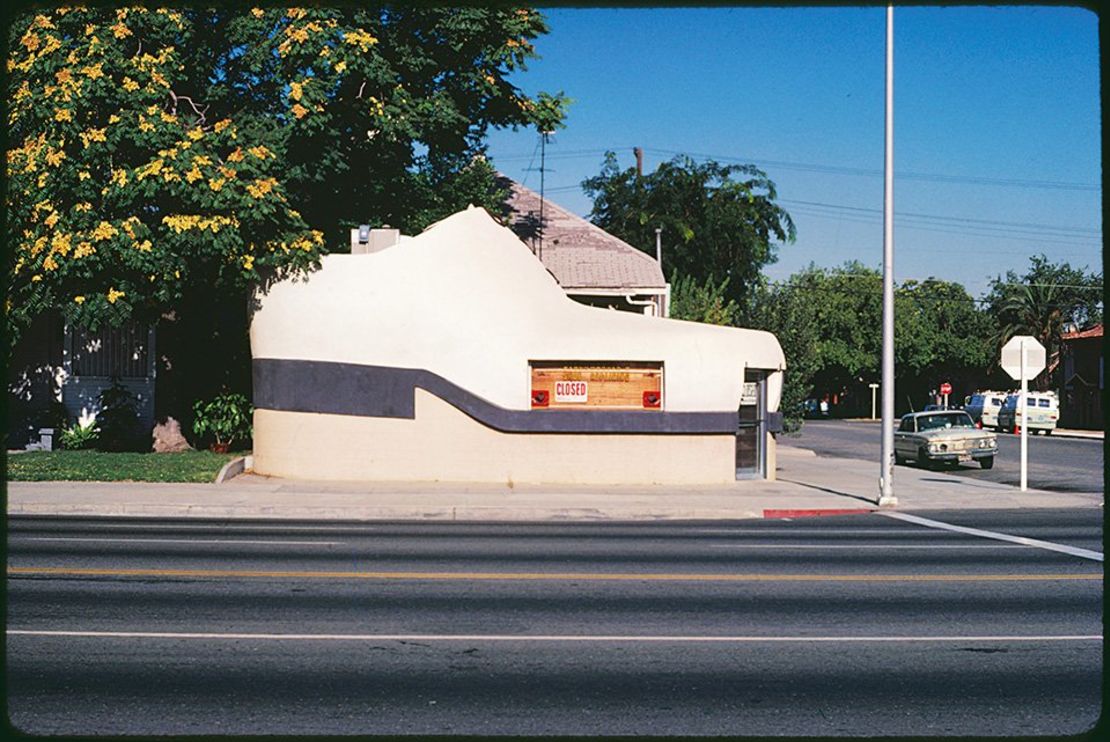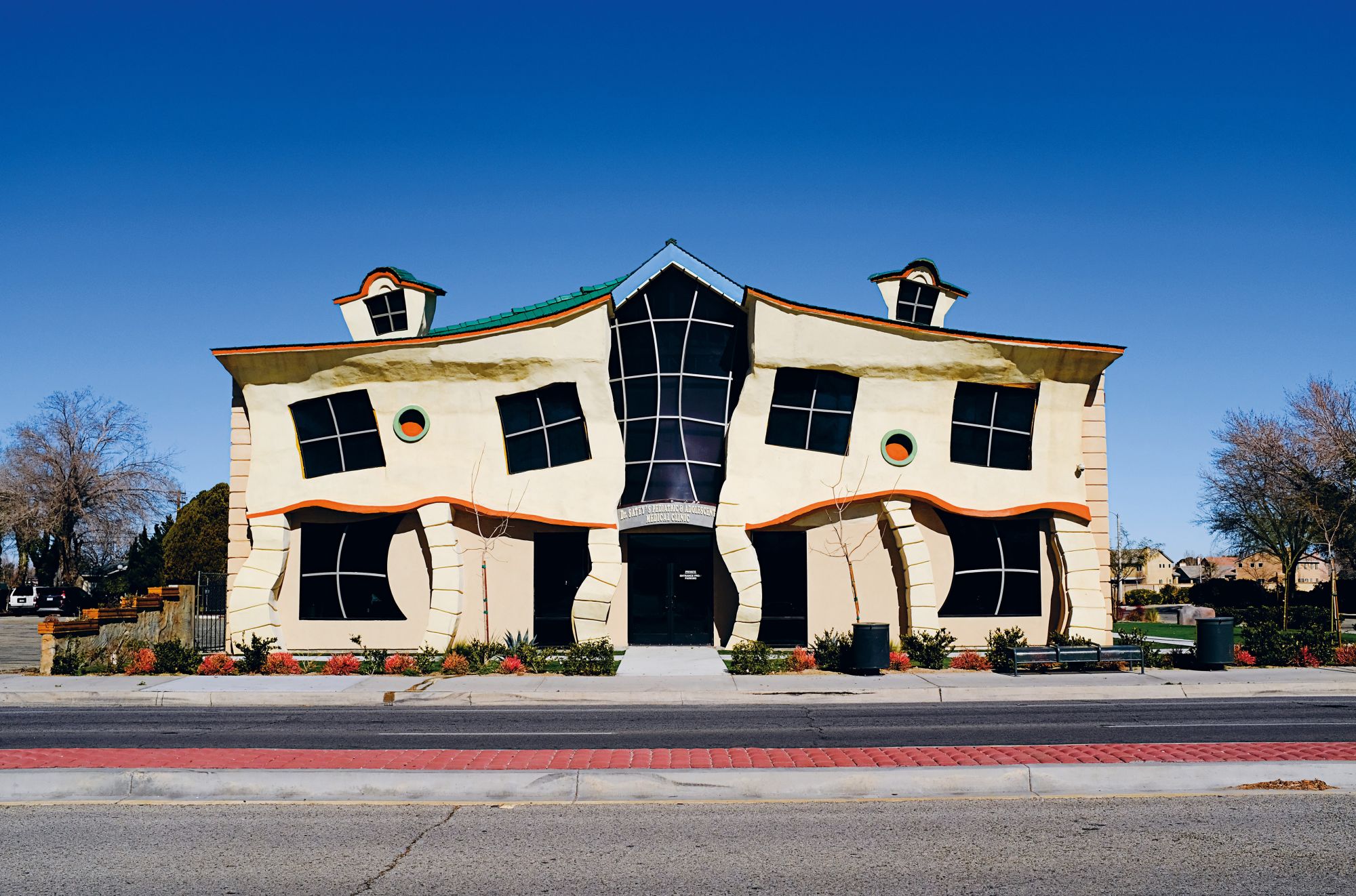Roadside architecture, a trend that had its heyday in 1930s Southern California, was once dismissed by critics. But now it’s enjoying a resurgence. A giant doughnut, a shoe-shaped shoe repair shop, an ice cream parlor that looks like a massive owl and a hot dog as big as a firetruck: few places in the world have as many crazy buildings as Southern Calfornia, and these are just a few of the eye-grabbing oddities that pepper the streets of the Greater Los Angeles area.
It’s called programmatic architecture (but also informally roadside, pop or bizarro architecture), a product of 1920s California and the boom of the automobile, designed to catch the attention of passing motorists.
“It’s really based around the car and the transition of commerce from pedestrian streets to roadside,” said Jim Heimann, the author of “California Crazy,” the latest edition of a book that has chronicled roadside architecture since 1980.

“Once the automobile became common, you had people going by at 35 miles an hour looking for places to go to,” Heimann said in a phone interview.
“And Southern California became a hatchery for this architecture, because California was completely driven in development by the automobile.”
Ugly and insignificant?
Built on a budget and designed to sell products, these buildings have long been snubbed by the architectural elites, but are now having somewhat of a comeback.
“Historians and critics had totally dismissed this segment, which was pretty much reviled by everybody because it was deemed insignificant and ugly. So it became this invisible footnote to architectural history, but it’s now become apparent that there clearly is space for these type of buildings in the historical perspective,” said Heimann.

Things started to change in 1972 with “Learning from Las Vegas,” a book about postmodernism and the Las Vegas strip, which altered the perception of roadside architecture. The first edition of “California Crazy” was published eight years later.
But the slow growth in popularity and the transient nature of the businesses associated with these buildings, mostly small independent fast food shops, have taken a toll.
“The majority have disappeared. Some famous ones still exist, like the giant doughnut shop close to LAX, which you can actually see flying in if you know where to look.”

Out of the hundreds of buildings portrayed in the book, Heimann estimates that between 15 and 20 are still standing. “It’s tough to keep them up. Property values are so high that it’s not easy for these to stick around for too long. But there are a few people now who are actually buying them and restoring them,” he said.
Worldwide phenomenon
This architectural form may be past its heyday, but new entries occasionally pop up: the newest addition to the book (seen at the top of this page) was discovered by Heimann earlier this year, as it was about to go to print: “It’s a juvenile medical clinic north of Los Angeles and it’s this complete Dr. Seuss, crazy-looking, weird little building. So the tradition continues.”
Most modern examples are usually just facades to structures made in compliance with seismic regulations and disabled access, which were not a priority a few decades ago.
California's craziest buildings
The reason why roadside architecture is endemic to Southern California, says Heimann, is the result of several factors including an abundance of unconventional people settling in the region, cheap building materials (“Chicken wire, two by fours and tar paper are what most of these are made out of”) and something he calls the “Hollywood connection.”
“That’s the proximity to movie studios, amusement parks and expositions, because in these enclosed environments you can have something as crazy a giant ostrich or elephants or pagodas, you know, all within one street.”
But the phenomenon is not necessarily a regional one anymore. “I’ve found so many completely insane buildings all around the world,” he said.
“Australia has a giant koala bear, a giant sheep and a giant pineapple, while in Japan there are bus stops made to look like huge strawberries and mushrooms, and in China there are three Ming dynasty kings that are 40-story apartment buildings. It goes on and on.”
“California Crazy” by Jim Heimann, published by Taschen, is available now.
This article was originally published in June 2018.














